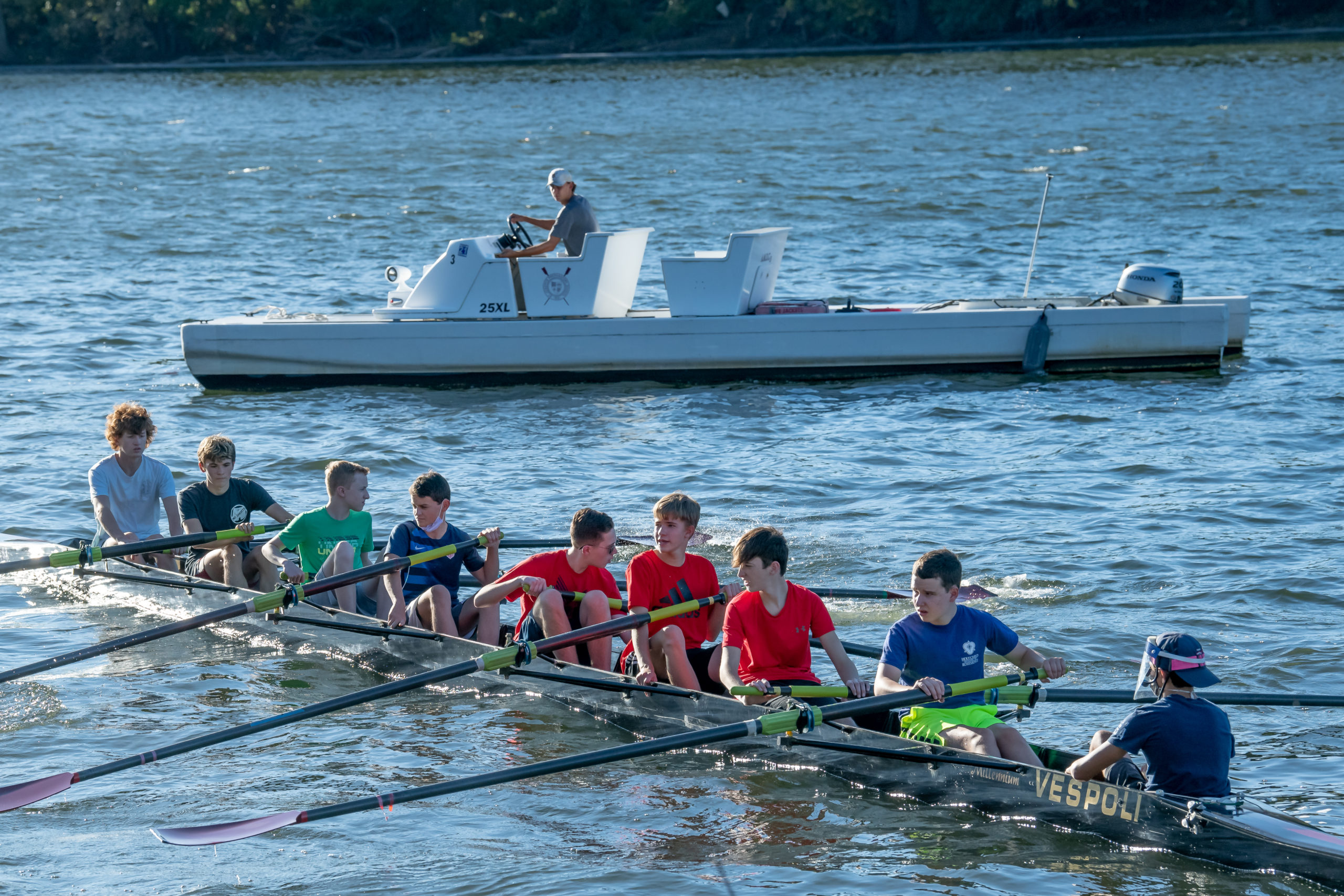BY BILL MANNING
PHOTO BY ED MORAN
To continue reading…
This article is exclusively for Rowing News subscribers. For as little as $5 a month, you can get access to the best quality, independent reporting on all the issues that matter to the North American rowing community.
Already a subscriber? Login
Time is short. Fully preparing a crew to race requires more time than is frequently available. Consequently, we try to prepare crews and athletes adequately by using the available time as efficiently as possible. Incorporating dual-purpose practices into the training schedule makes this more possible.
A dual-purpose practice enables coaches to address two or more aspects of needed preparation simultaneously—for example, teaching skills during lower-intensity training. The utilization training prepares the athletes physiologically, while the instruction improves their stroke. (One could argue that to row/scull without attention to skill is simply to build bad habits, and that the dual focus of this training is absolutely necessary.)
Equally valuable is pairing race-rehearsal activities with higher-intensity training. Shorter pieces at race rates increase anaerobic capacity, but rather than just repeating 500-meter pieces at one rate, incorporate race plans and/or race scenarios. Doing so gives athletes the opportunity to execute—and improve—what they must do on race day repeatedly.
Racing starts are too often taught separately and divorced from training. Create a dual-purpose practice by including the starting sequence in training pieces. Whatever the intensity of the piece, simply begin at the catch with the stroke sequence used to get the boat up to speed. The pressure may be less than full, and thus the start slower, but doing this enables the crew to practice the initial building strokes more frequently, and thus make them more routine.
The same is true with rate lifts (“sprinting”). Lifting at the end of a longer piece teaches tired athletes how to increase boat speed by shifting up the rate. Rather than doing all aerobic threshold (AT) pieces consistently at one rate, try going up two with 90 seconds to go and up two more for the last 10. When racing, we lift the stroke rate only when tired, so best to practice lifting when tired.
Dual-purpose practices work also on land. When erging at an assigned rate, designate a stroke and have the others follow him or her. Require the team to replicate the pattern of the desired stroke rather than merely hold a rate. Linking dynamic ergs together helps significantly. Doing this trains both physiology and sequencing.
Routine competition in practice develops confident, capable athletes, whether on the water or the erg, while also building fitness. Set up some workouts so it’s not about holding a certain split but rather about going faster than a similarly capable peer. Handicap athletes so those of varied abilities can still compete with each other. If the athletes are rowing and racing to win, then give them the opportunity to rehearse trying to win.
If performing weight circuits for aerobic endurance, do them at race rate. Make the weight light enough so that athletes can complete the activity 30-plus times a minute and their bodies will develop the quickness needed on the water.
The most important element to add to the majority of practices is fun. Always look for ways to make the training more enjoyable. Purposeful fun makes faster boats.
Time is short, but we all have exactly the same amount of time before the championships. Incorporate dual-purpose practices into your training plan and you’ll accomplish more in the time available.

